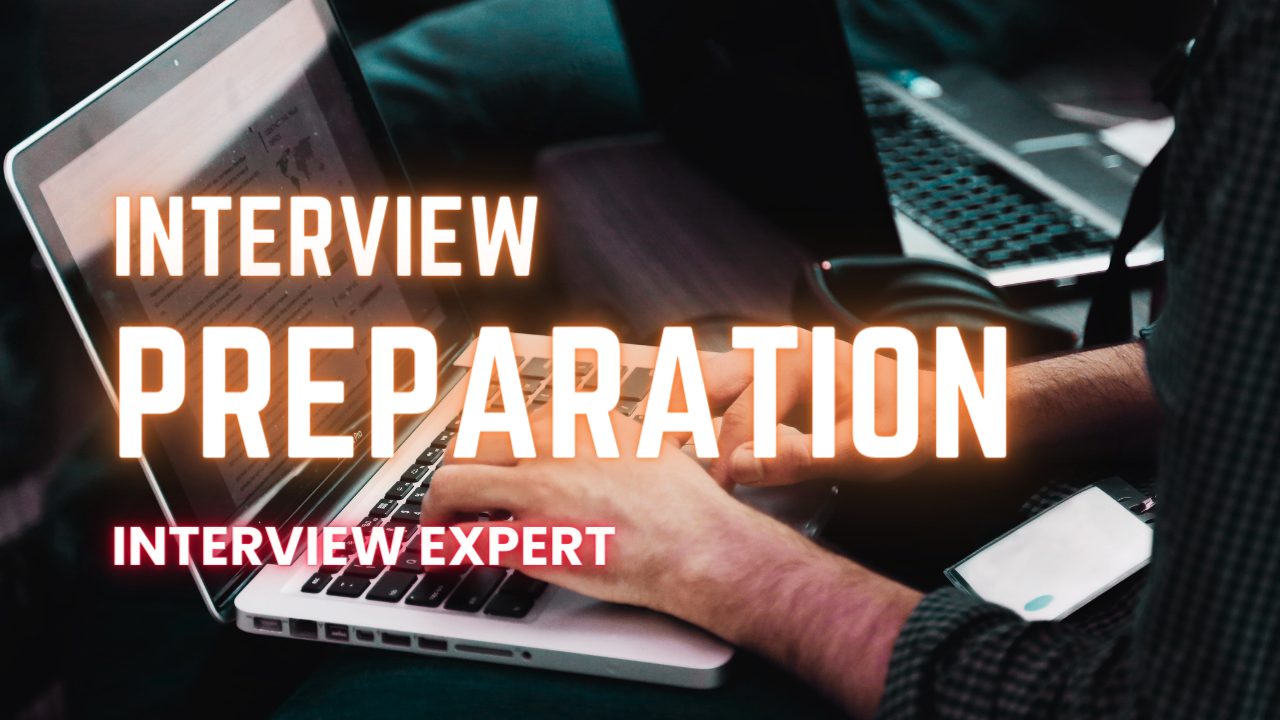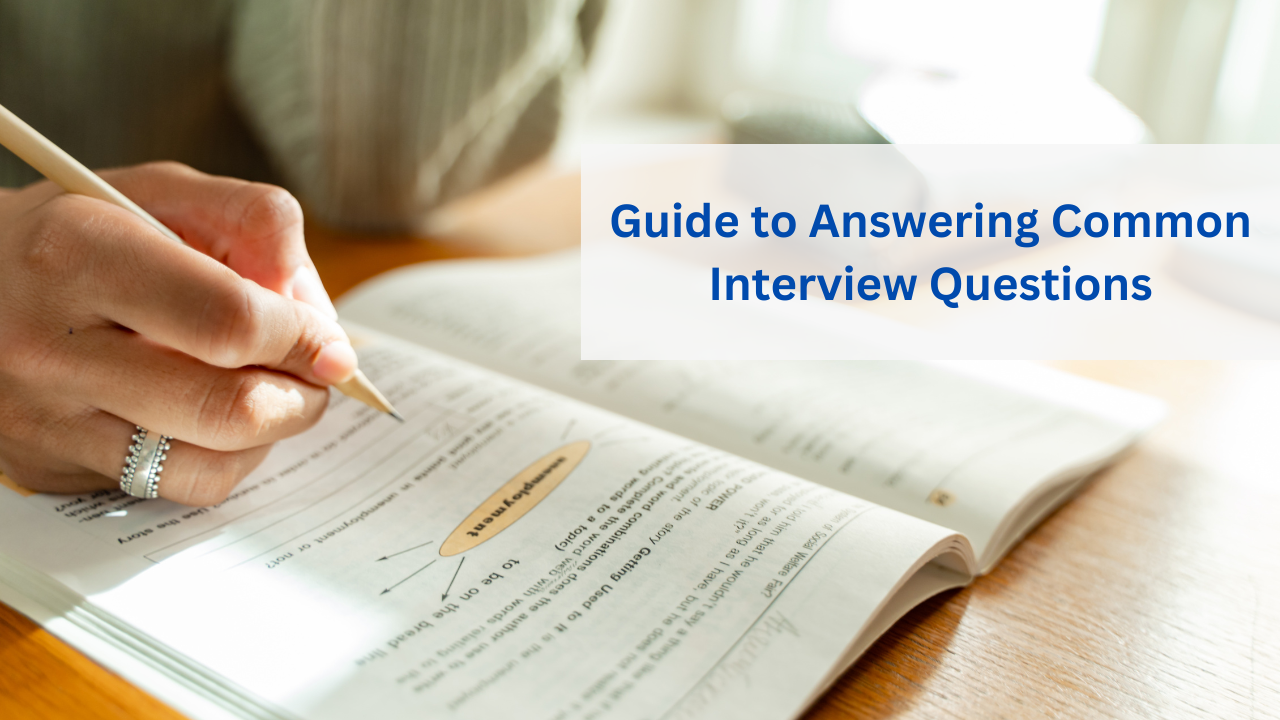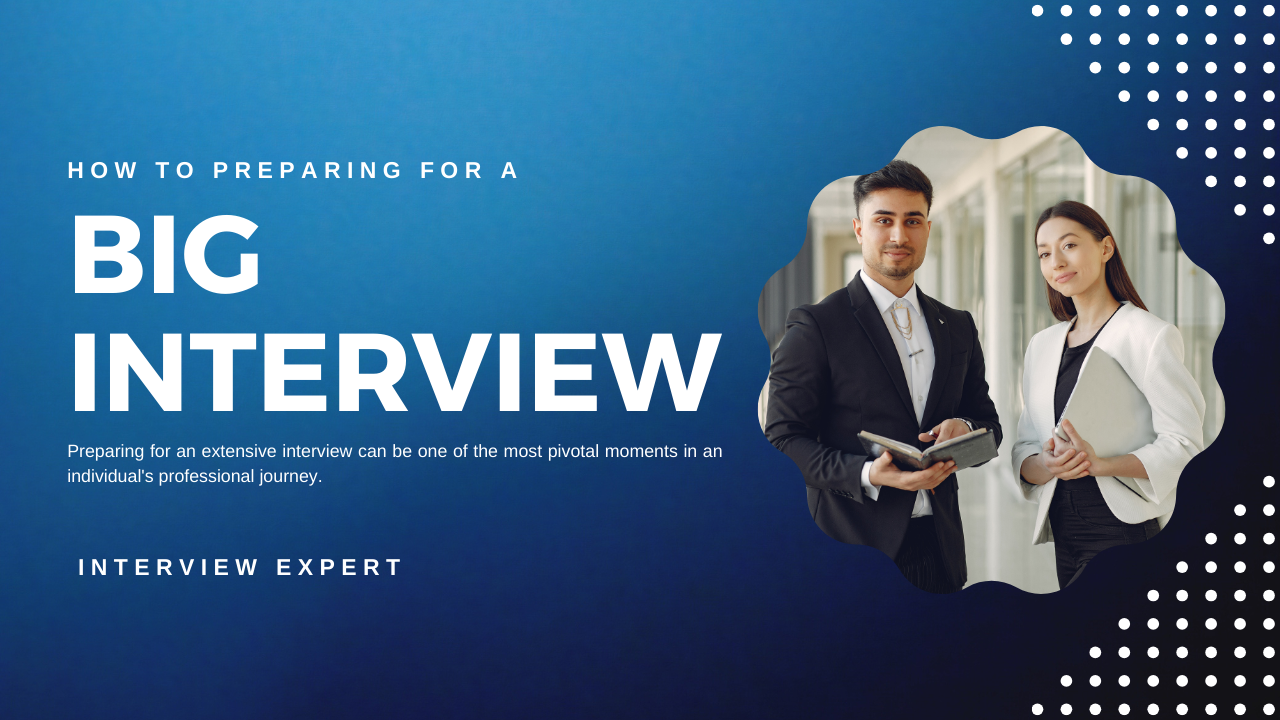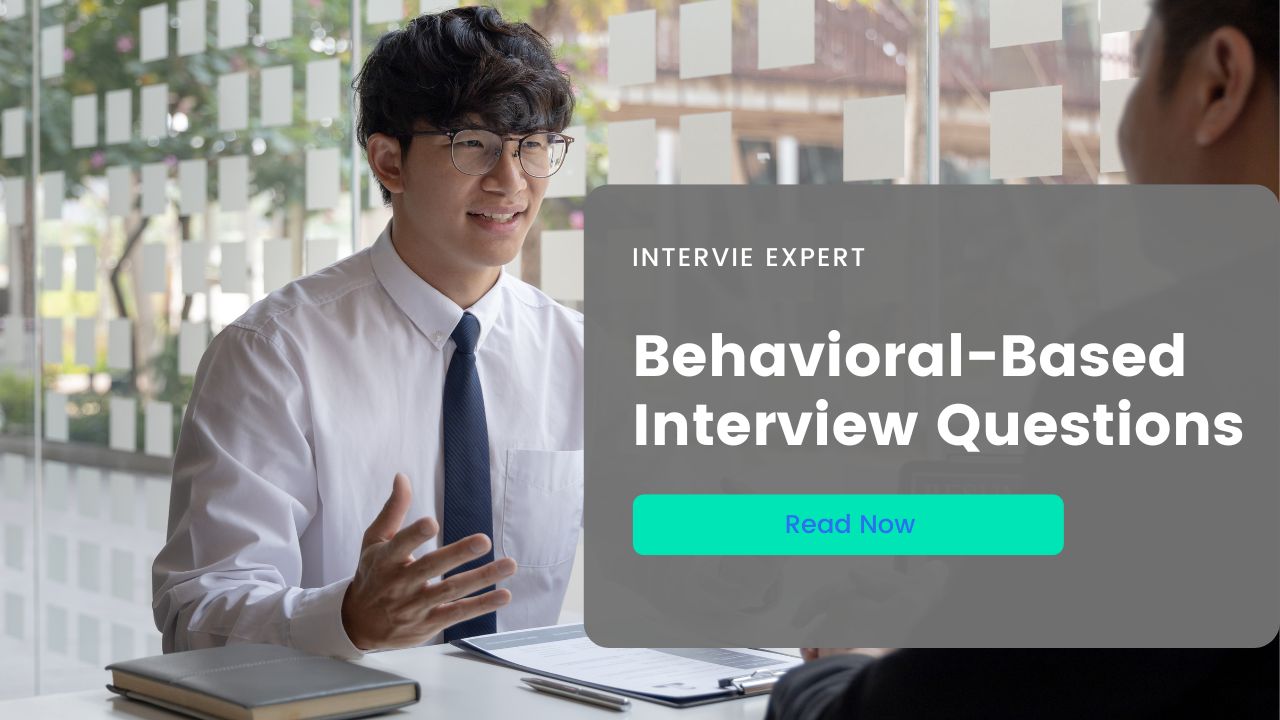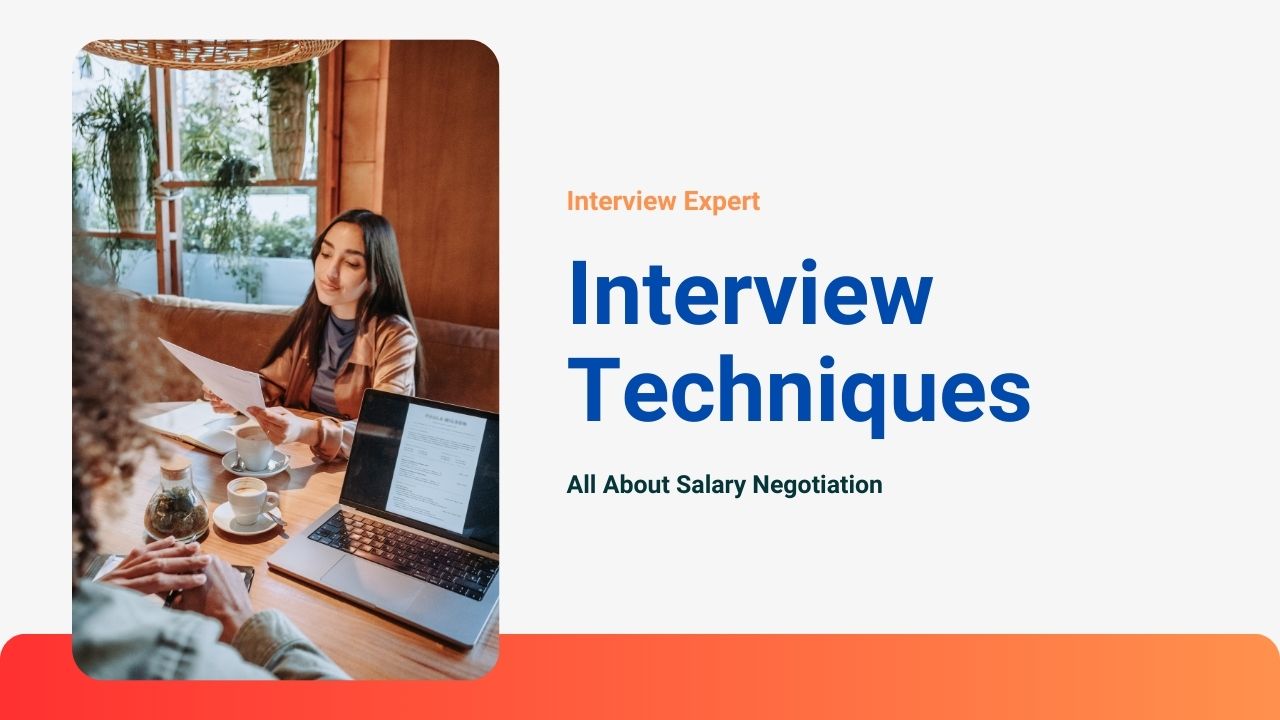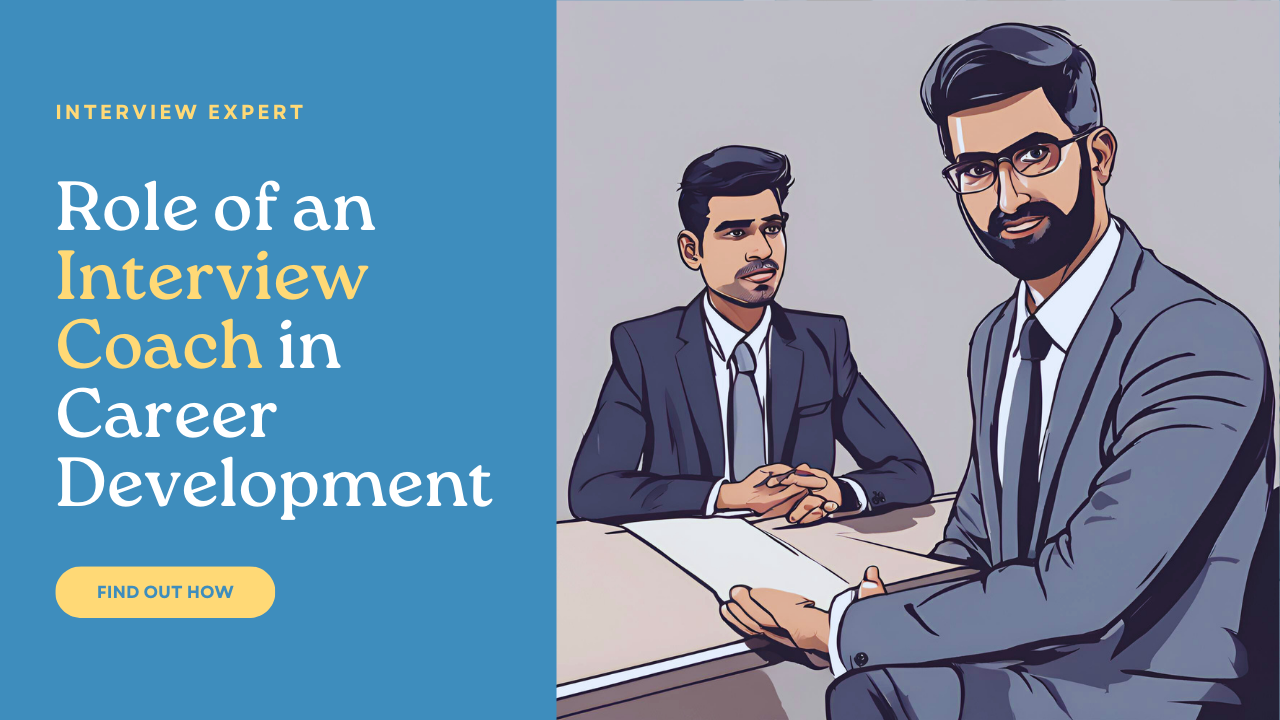Guide to Common Interview Questions (Part 1)
Job interviews serve as the crucial gateway between aspiring candidates and their desired professional roles. They are not only an opportunity for employers to assess a candidate’s qualifications and skills but also a chance for the interviewee to showcase their suitability for the position. To prepare effectively for this pivotal encounter, it is essential to familiarize oneself with common job interview questions. This blog aims to explore some of the frequently asked questions, offering insights into effective responses and strategies for success.
Tell Me About Yourself:
One of the most commonly asked questions, “Tell me about yourself,” invites candidates to provide a concise yet comprehensive overview of their professional background, skills, and experiences. While it may seem open-ended, it is crucial to tailor the response to align with the job requirements, emphasizing relevant achievements and showcasing how one’s unique qualities make them an ideal fit for the role. In the realm of job interviews, few questions are as deceptively simple yet profoundly impactful as “Tell me about yourself.” Despite its apparent openness, this inquiry serves as a strategic gateway for candidates to introduce themselves, set the tone for the interview, and leave a lasting impression. This blog delves into the art of answering this question effectively, providing insights into structuring a compelling narrative that showcases both professional prowess and personal attributes.
- Start with a Concise Introduction: Begin by offering a succinct introduction that encapsulates key professional details. Mention your current position or most recent role, providing a snapshot of your expertise and industry experience. This serves as the initial hook, capturing the interviewer’s attention and laying the foundation for the narrative to unfold.
- Highlight Relevant Achievements: Following the introduction, transition seamlessly into highlighting key achievements and milestones in your career. Choose accomplishments that directly align with the requirements of the job you are interviewing for. Quantify your achievements whenever possible to lend credibility and impact to your narrative. This not only demonstrates competence but also substantiates your claims with tangible results.
- Emphasize Your Unique Value Proposition: Delve into what sets you apart from other candidates. Identify your unique skills, strengths, and qualities that make you an ideal fit for the role. Consider incorporating aspects of your personality or work style that align with the company culture. This is an opportunity to showcase not just what you do but how you do it, emphasizing your potential contributions to the team.
- Connect Your Story to the Job: Tailor your narrative to align with the specific job requirements. Highlight experiences, skills, or projects that directly relate to the role you are interviewing for. By drawing clear connections between your background and the company’s needs, you demonstrate a genuine interest and understanding of the position.
- Demonstrate Passion and Enthusiasm: Infuse your narrative with enthusiasm for your field and genuine excitement about the prospect of contributing to the company’s success. Passion is contagious, and expressing a sincere interest in the role can leave a lasting positive impression on the interviewer.
- Conclude with a Forward-Looking Statement: Wrap up your response by articulating your current career goals and how the position aligns with your professional aspirations. Express enthusiasm for the opportunity to contribute to the company’s growth and success, creating a forward-looking and optimistic conclusion to your narrative.
- Practice and Refine: Rehearse your response to ensure a smooth and confident delivery. Practice with a friend or in front of a mirror, focusing on maintaining a balance between brevity and depth. Refine your narrative based on feedback, ensuring that it flows seamlessly and effectively communicates your value.
Conclusion:
The “Tell me about yourself” question is not just a mere icebreaker but a strategic moment to present a tailored and impactful introduction. By structuring a narrative that combines professional achievements, unique qualities, and genuine enthusiasm for the role, candidates can transform this seemingly simple question into a powerful opportunity to make a memorable and positive impression during a job interview.
What Are Your Strengths and Weaknesses:
The objective of this question is to gauge self-awareness and honesty. When discussing strengths, candidates should highlight skills directly applicable to the job, while also showcasing adaptability and a willingness to learn. When addressing weaknesses, it is advisable to acknowledge areas for improvement while demonstrating a proactive approach to personal and professional development. The classic interview question, “What are your strengths and weaknesses?” serves as a dual-edged sword, probing into a candidate’s self-awareness, honesty, and suitability for the role. Successfully navigating this inquiry requires a delicate balance of humility, confidence, and strategic communication. This blog explores the art of responding to this question, providing insights into showcasing strengths and addressing weaknesses in a manner that leaves a positive and lasting impression.
- Strengths: When addressing strengths, candidates should strategically choose qualities that align with the job requirements. Begin by identifying key skills and attributes that have contributed to your success in previous roles. Articulate these strengths with confidence and provide specific examples or achievements that highlight your proficiency. Consider incorporating qualities that are not only relevant to the job but also differentiate you from other candidates.
- Tailor Strengths to the Job: Align your strengths with the specific needs of the position. If the job requires strong leadership skills, discuss instances where your leadership prowess has made a tangible impact. Use the opportunity to showcase how your strengths are directly transferable and beneficial to the prospective employer.
- Highlight Soft and Technical Skills: Balance your response by highlighting a mix of soft and technical skills. Soft skills, such as communication, teamwork, and adaptability, are often as valuable as technical expertise. Presenting a well-rounded set of strengths demonstrates versatility and a holistic approach to professional success.
- Back Your Claims with Examples: Mere assertions of strengths may lack impact. Bolster your claims by citing specific examples or achievements that substantiate your strengths. Whether it’s successfully leading a project, solving a complex problem, or fostering effective collaboration, real-life scenarios provide tangible evidence of your capabilities.
- Weaknesses: Addressing weaknesses requires finesse and honesty. Begin by selecting a genuine weakness but one that is not a fundamental requirement for the job. Presenting a weakness that is relevant but manageable indicates self-awareness and a proactive approach to personal development.
- Showcase Growth and Improvement: While discussing weaknesses, emphasize the steps you’ve taken to overcome or mitigate them. Illustrate a commitment to continuous improvement and professional development. Employers value individuals who not only recognize their areas for improvement but actively work towards addressing them.
- Avoid Generic Responses: Steer clear of clichéd or overly rehearsed responses. Generic answers such as “I’m a perfectionist” may come across as insincere. Instead, provide a thoughtful and genuine weakness that allows the interviewer to see your authenticity and self-reflection.
- Express Willingness to Learn: Conclude your response on weaknesses by expressing a sincere willingness to learn and grow. Emphasize that you view challenges as opportunities for development and that you are committed to enhancing your skills and addressing any areas of improvement.
Conclusion:
Addressing the “strengths and weaknesses” question in a job interview requires a delicate dance between self-assuredness and humility. By strategically showcasing relevant strengths, providing concrete examples, and addressing weaknesses with honesty and a commitment to improvement, candidates can transform this question into an opportunity to demonstrate their self-awareness, resilience, and suitability for the position.
Why Do You Want This Job:
Employers are interested in understanding a candidate’s motivation for applying. A successful response involves expressing genuine enthusiasm for the company and the role, aligning personal career goals with the organization’s values and objectives. Researching the company and its culture beforehand is key to formulating a compelling answer. The question, “Why do you want this job?” is a pivotal moment in a job interview, demanding more than a generic response. It requires candidates to articulate a compelling narrative that not only highlights their qualifications but also underscores their genuine interest and alignment with the company’s values and objectives. This blog explores the art of answering this question effectively, providing insights into crafting responses that leave a lasting and positive impression.
- Research the Company: Before the interview, invest time in researching the company thoroughly. Understand its mission, values, culture, and recent achievements. Familiarity with the organization’s background equips you with the knowledge to tailor your response to align with the company’s ethos.
- Connect Your Skills and Values to the Job: Begin your response by identifying specific aspects of the job that resonate with your skills, experiences, and professional values. Articulate how your unique qualifications make you an ideal fit for the role, emphasizing the value you can bring to the team.
- Highlight Your Professional Goals: Showcase how the job aligns with your long-term career goals. Expressing a clear connection between the position and your aspirations demonstrates that you’ve thoughtfully considered how this role fits into your professional trajectory. This can also indicate to the interviewer that you are likely to be a committed and motivated employee.
- Emphasize the Company’s Impact: Demonstrate your understanding of the company’s impact on its industry or community. Whether it’s a commitment to innovation, sustainability, or community engagement, expressing enthusiasm for the company’s broader contributions communicates a deeper level of engagement and interest.
- Express Cultural Alignment: Companies often prioritize cultural fit. Use this question as an opportunity to showcase your compatibility with the company culture. Discuss specific cultural elements, such as collaboration, diversity, or a commitment to excellence, and explain how your values align with these aspects of the organization.
- Reference Specifics: Avoid generic statements and instead reference specific details about the company that appeal to you. Whether it’s a recent successful project, a unique approach to problem-solving, or the company’s reputation for employee development, citing specifics demonstrates a genuine interest and attentiveness to detail.
- Relate to Your Passion: Passion is contagious. Express your enthusiasm for the industry, the company’s mission, or the specific projects associated with the role. A sincere passion for the work can set you apart and convey a level of commitment that employers value.
- Be Honest and Authentic: Authenticity is key. While it’s important to tailor your response, avoid embellishing or providing answers that don’t align with your genuine feelings. Interviewers often appreciate sincerity, and an authentic response can build rapport and trust.
Conclusion:
Answering the question, “Why do you want this job?” is an opportunity to showcase not only your qualifications but also your genuine interest and alignment with the company. By conducting thorough research, connecting your skills to the job, emphasizing your professional goals, and expressing a cultural fit, you can craft a response that resonates positively with the interviewer, setting the stage for a successful interview and potential collaboration.
Describe a Challenging Situation and How You Overcame It:
Behavioral questions like these assess a candidate’s problem-solving skills and resilience. The STAR method (Situation, Task, Action, Result) is an effective framework for structuring responses. By providing specific examples, candidates can demonstrate their ability to navigate challenges and contribute positively to the workplace.
Where Do You See Yourself in Five Years:
This question assesses a candidate’s long-term commitment and career aspirations. Responding with a well-thought-out plan that aligns with the prospective employer’s goals and demonstrates ambition while remaining realistic can leave a positive impression.
How Do You Handle Stress and Pressure:
In today’s fast-paced work environments, employers value individuals who can thrive under pressure. Candidates should discuss their coping mechanisms, time-management skills, and past experiences that showcase their ability to remain composed and effective in high-stress situations.
What is Your Greatest Professional Achievement:
This question provides an opportunity to showcase concrete examples of one’s impact in previous roles. Candidates should choose an achievement that aligns with the job they’re applying for and use the STAR method to highlight their contributions and the positive outcomes.
Conclusion:
Navigating common job interview questions requires a combination of preparation, self-awareness, and the ability to tailor responses to the specific requirements of the role and the organization. By mastering these questions, candidates can present themselves as confident, capable, and well-suited for the positions they seek, increasing their chances of success in the competitive job market.

